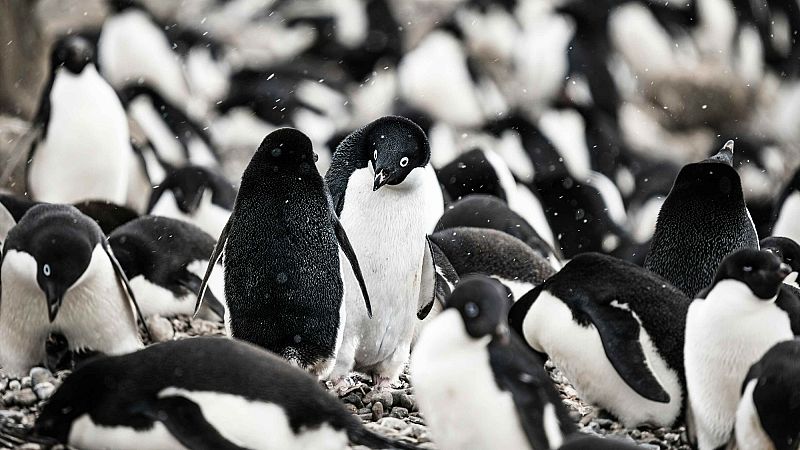
Antarctica’s number one cutest animal might be saving the planet with its number two.
A recent study published in Communications Earth & Environment finds that ammonia released from penguin guano – yes, their poo – may help form clouds that insulate the Earth and prevent sea ice from melting.
A natural cloud factory in Antarctica
Researchers from the University of Helsinki spent two months on the Antarctic Peninsula measuring the air near a colony of 60,000 Adélie penguins.
When winds blew from the direction of the colony, ammonia levels in the atmosphere surged more than 1,000 times above baseline levels.
Ammonia from the guano reacts with sulfur-containing gases emitted by marine phytoplankton, forming aerosol particles that seed clouds. These clouds reflect sunlight and help cool the surface below, a process that could slow glacial melt and sea ice retreat.
The penguins act as “major emitters” of this ammonia, lead author Matthew Boyer explains.
“There is a deep connection between ecosystem processes – being the ocean phytoplankton activity as well as penguins – and atmospheric processes that can have an impact on the local climate,” he told ABC News.
Even after the penguins migrate, the lingering guano continues to emit ammonia. In one case, researchers observed a fog bank that lasted for three hours after a spike in aerosol concentration.
A reminder of what’s at stake
The findings highlight how interconnected Antarctic ecosystems are with Earth’s climate systems. As ice melts and habitats shift due to global warming, it’s not just wildlife like penguins that are at risk, but also the natural processes they support.
The Antarctic plays a vital role in stabilising global temperatures, acting as a heat buffer, a carbon sink and the engine behind ocean currents, according to the Antarctic and Southern Ocean Coalition. But it’s also one of the fastest-warming regions on Earth.
The Thwaites Glacier – dubbed the ‘Doomsday Glacier’ – alone could raise sea levels by up to three metres if it collapses.
Understanding how local processes affect global climate systems is now more critical than ever.
Novel climate solutions are taking root elsewhere, too
Penguin poop isn’t the only unexpected ally in the fight against climate change and ecological destruction.
In Kenya and other parts of East Africa, beehive fences are proving to be a natural solution to human-wildlife conflict. Elephants avoid the fences because they fear bees. That protects crops, farmers and elephants alike.
In the UK, engineers have developed electric wallpaper to cut home heating emissions, one of the biggest sources of carbon in colder climates.
A French company called New World Wind has also created ‘wind trees’ – artificial trees equipped with tiny, silent turbines that capture energy from light breezes in urban areas.
The compact trees can generate electricity year-round in spaces too tight for traditional wind turbines, powering everything from streetlights to small buildings.
Whether it’s penguin poo or warming wallpaper, novel insights and solutions like these could help shape future climate change and conservation strategies.







